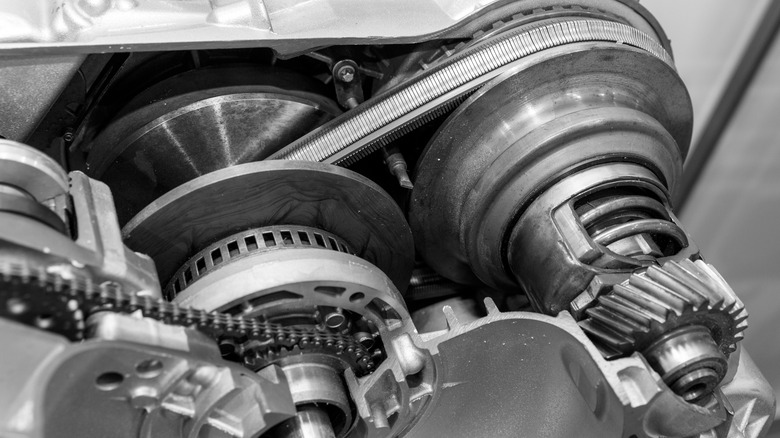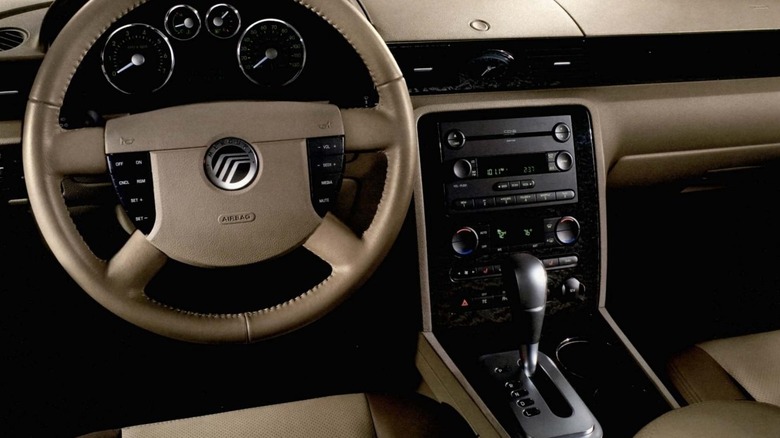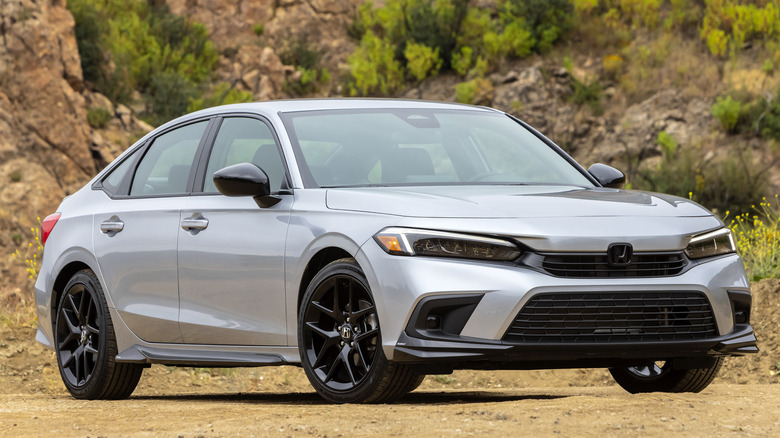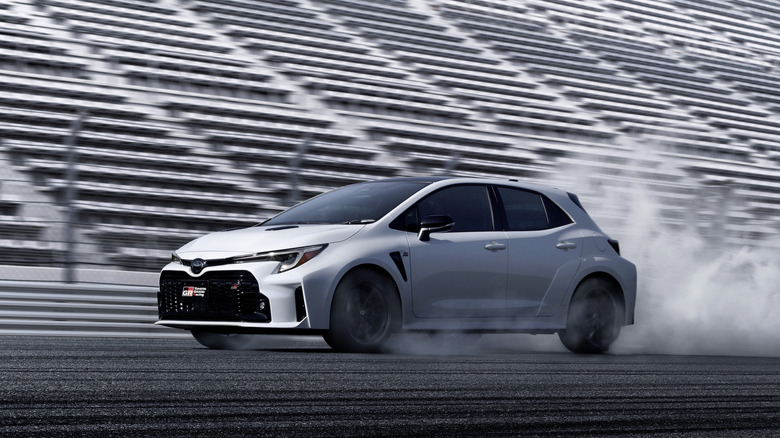What Is A CVT? (And Why It Gets A Bad Rap)
Some gearheads obsess over what transmission any given car has, putting manual transmissions at the absolute pinnacle of driving enjoyment. Automatic transmissions are near the bottom, and CVTs (continuously variable transmissions) suck all enjoyment out of driving.
Some diehard enthusiasts won't touch a car with a CVT even if it has every other option they may want. It has garnered a terrible reputation among the enthusiast community as being slow and lacking any emotive or engaging feelings when driving.
In reality, the CVT is not the harbinger of the apocalypse, and it won't damage your crops or steal your firstborn like many seem to think. No one is going to steal your manual transmission car and swap out the stick shift for a CVT. It's just another means of transferring energy from the engine to the wheels.
In fact, many cars today — like the 2023 Honda Civic sedan — have a CVT as the only transmission option. Nissan has long used CVTs as its de facto transmission choice.How does a CVT work, and why is it not necessarily the end of the world for having fun while driving?
How a CVT works
To the driver, CVTs don't operate any differently than a regular automatic transmission in that the driver doesn't have to do anything aside from pressing the gas pedal to move the car forward. A CVT doesn't have traditional gears: Instead of feeling the slight jerk and drop in RPM one would feel and hear when an automatic transmission changes gear, CVTs deliver power smoothly without any interruptions.
Mechanically, it's a different beast entirely compared to manual and automatic transmissions. Instead of gears, CVTs operate through a sort-of pulley system: There are no gears of a set size that determine engine output speed to the wheels. Instead, cones attached to the pulley system move in and out to dictate transmission speed. There are no set ratios on said cones, hence the "continuously variable" nomenclature.
CVTs have made gearheads upset because even the sloppiest of gear changes on a manual or automatic transmission impart some sort of "feel" to the driver while accelerating, and there is no such sensation when driving a car equipped with a CVT. People who car shop with driving enjoyment in mind have often shied away from CVTs for fear of boring driving.
Fortunately, there's an entire industry's worth of fun cars currently for sale, and a literal century's worth of older cars to enjoy that don't have a CVT. However, for the average driver just trying to get to work and go about their day, CVTs offer quite a few benefits.
Fuel savings abound
One benefit that even the most stalwart old-manual transmission purist can't argue with is the immense fuel savings. A bone-stock 2023 Honda Civic is equipped with a CVT and has an estimated combined fuel economy of 36 miles per gallon. Compare that to a similarly classed car, a 2019 Chevy Cruze with a six-speed automatic: The Cruze has a 1.4-liter turbocharged four-cylinder while the Civic has a 1.5-liter turbocharged four-cylinder.
The Cruze only managed an estimated 32 combined miles per gallon. A difference of four miles per gallon may not seem like a lot in the short term, but those trips to the gas station very quickly add up.
Many auto manufacturers have equipped their entry-level sedans with CVTs as standard. That includes the Nissan Versa, Honda Civic, and Toyota Corolla. Only the Subaru Impreza has a base five-speed manual with an optional CVT. The manual transmission Impreza accomplishes an estimated 26 combined miles per gallon, while the CVT model gets an estimated 32 combined miles per gallon. That's hardly a marginal difference.
Interestingly, VW's entry-level Volkswagen Jetta (2023) escapes this. It's not only available with a standard six-speed manual, but the optional eight-speed automatic transmission doesn't make too much of an impact on fuel economy. The manual gets an estimated combined 34 miles per gallon, while the automatic gets an estimated combined 35 miles per gallon.
What about enthusiasts?
For the large majority of drivers, whether or not a car has a sufficient driving feel or a more conventional drivetrain isn't really important. Fuel economy and the smoothness of acceleration, on the other hand, are likely to tip the scales in favor of a CVT for the average person shopping for a car today.
As it stands, most buyers looking for a basic new car don't have a lot of choices when it comes to transmissions anyway. Realistically, sacrificing any kind of driving purism (that they likely didn't care about in the first place) in favor of saving money on gas is a no-brainer.
For all the remaining driving enthusiasts and aforementioned purists, there are still plenty of new cars out there with a stick shift. Cars made exclusively for the car fanatic demographic like the Acura Integra Type S come with a six-speed manual as the only option. The Toyota GR Corolla, too, has a standard six-speed. So if you're a more spirited driver, don't worry about the wave of standard CVTs — the enthusiast market is very much alive and well.



